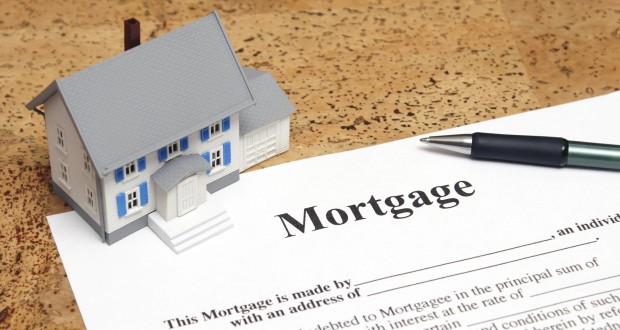Buying a home is one of the biggest financial decisions you’ll ever make, and the mortgage rate you get can save—or cost—you thousands of dollars over time. Even a small difference in your interest rate can add up to a huge amount over 15 or 30 years.
So, how do you make sure you get the lowest mortgage rate possible? It’s not just about luck—it’s about strategy. In this guide, we’ll break down everything you need to know to secure the best rate and save money on your home loan.
1. Improve Your Credit Score
Your credit score is one of the biggest factors lenders look at when deciding your mortgage rate. The higher your score, the lower your interest rate will likely be.
How to Boost Your Credit Score Before Applying:
- Check your credit report (free at AnnualCreditReport.com) and fix any errors.
- Pay down credit card balances—keeping your credit utilization below 30% (ideally under 10%) helps.
- Avoid opening new credit accounts before applying for a mortgage.
- Make all payments on time—even one late payment can hurt your score.
Tip: A FICO score of 740 or higher usually gets you the best rates.
2. Save for a Bigger Down Payment
The more money you put down, the less risky you appear to lenders—which can mean a lower interest rate.
- 20% down is the sweet spot—it avoids private mortgage insurance (PMI) and often gets better rates.
- Even 10-15% down can help lower your rate compared to a 3-5% down payment.
- Some lenders offer discounts for larger down payments (e.g., 25% or more).
Tip: If you can’t put 20% down, look into first-time homebuyer programs that offer low rates with smaller down payments.
3. Shop Around with Multiple Lenders
Not all lenders offer the same rates—comparing at least 3-5 lenders can save you big money.
Where to Look for the Best Rates:
- Big banks (like Chase, Wells Fargo)
- Credit unions (often have lower rates for members)
- Online lenders (like Rocket Mortgage, Better.com)
- Local mortgage brokers (they can find deals you might miss)
Tip: Get loan estimates from each lender on the same day—rates change daily, so this ensures a fair comparison.
4. Choose the Right Type of Mortgage
The loan type you pick affects your rate. Here’s a quick breakdown:
| Loan Type | Best For | Typical Rates (2024) |
|---|---|---|
| 30-Year Fixed | Long-term stability | ~6.5%-7.5% |
| 15-Year Fixed | Faster payoff, lower rate | ~5.75%-6.5% |
| 5/1 ARM | Planning to move in 5-7 years | ~6.0%-6.75% (starts lower, adjusts later) |
| FHA Loan | Lower credit scores, smaller down payment | ~6.25%-7.0% (includes mortgage insurance) |
| VA Loan | Veterans & military (no down payment) | ~5.75%-6.5% (no PMI) |
Tip: If you plan to stay in the home long-term, a fixed-rate mortgage is safest. If you’ll move soon, an adjustable-rate mortgage (ARM) could start with a lower rate.
5. Lower Your Debt-to-Income Ratio (DTI)
Lenders check your DTI (monthly debt payments ÷ gross income) to see if you can afford the mortgage.
- Ideal DTI: Below 36% (some lenders allow up to 43-50%, but lower is better).
- How to improve DTI: Pay off credit cards, car loans, or other debts before applying.
Tip: If your DI is high, consider a smaller loan amount or increasing your income (like a side hustle) before applying.
6. Consider Buying Mortgage Points
Mortgage points (or “discount points”) let you pay upfront to lower your rate.
- 1 point = 1% of the loan amount (e.g., 3,000ona300,000 loan).
- Each point typically lowers your rate by 0.25%.
Good for: People who plan to stay in the home long-term (5+ years).
Tip: Calculate the break-even point (how long it takes to recoup the cost) before buying points.
7. Lock Your Rate at the Right Time
Mortgage rates change daily based on the economy.
- Lock when rates are low (check trends at Bankrate or Freddie Mac).
- A rate lock (usually 30-60 days) protects you from increases while your loan processes.
Tip: If rates drop after locking, some lenders offer a float-down option to adjust.
8. Strengthen Your Financial Profile
Lenders love stable, reliable borrowers. To get the best rate:
- Have a steady job (2+ years in the same field helps).
- Keep cash reserves (extra savings = less risk for lenders).
- Avoid big purchases (like a new car) before closing.
Final Tip: Negotiate!
Once you have offers from multiple lenders, ask them to beat the lowest rate. Many will match or improve their offer to win your business.
Bottom Line
Getting the lowest mortgage rate takes effort—but it’s worth it. By improving your credit, shopping around, and choosing the right loan, you could save $50,000+ over 30 years.
Ready to start? Check rates today and take the first step toward a cheaper mortgage!


